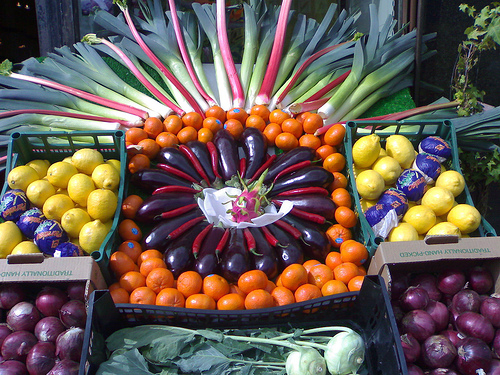Making the Switch to a Healthier Diet For Your Child

It is a major undertaking to switch form a typical diet, heavily weighted in processed food and drink, to a whole-foods diet. First of all, be completely convinced that it is the right thing to do and that it has to be done, then the whole family can inspire one another. If you have friends who eat healthy, let them help.
A good place to start is with breakfast. Try a multi-grained hot cereal to replace the dry cereal in a box. This change requires a bit more preparation time and a show of love and concern as you chip away at old habits and acquire new ones. The new cereal has a different (probably less sugary) flavor and texture, but it has a good chance of actually tasting better. You might need to make a more gradual transition by starting with as natural a dry cereal as you can find, one free of sugar, chemicals, and artificial coloring. Breakfast should be a “stick-to-the-ribs” meal: eggs, yogurt, and even a “little” meat will supply the protein and fat that makes the meal more sustaining. Fruit, as long as it is taken with these foods, also goes well.
Successfully introducing strange new foods requires creativity. Vegetables may have been rejected in the pat due to the practice of overcooking, rendering them unattractive, tasteless, and with fiber content providing the only speck of nutritional value. Learn to barely cook (steam) them. Salads are a wonderful way to enjoy raw vegetables. Some leftover cooked vegetables can be added, and several fruits blend nicely with greens. Markets often carry convenient packages of organic salad greens. A good salad dressing (read the label to make sure it is junk free) applied in small amounts is not prohibitive. When new habits are better established, think of creative ways of presenting more raw vegetables, such as “as is” or run through a juicer. The opportunities for more fruit intake are easier – as snack material, with regular meals, or blended with yogurt as a “smoothie”. When shopping for vegetables and fruits, a simple rule applies: deep, rich colors are correlated with a good content of phyto-antioxidants.
If availability or cost discourages you from purchasing organic foods, settle for next best. Look for produce that is fresh and harvested when ripe (even vegetables picked when they are “nature ready”). you can eliminate pesticide residues by peeling vegetables and fruits, and reduce residues by thoroughly washing leafy greens and other vegetables with a dilute soap solution (followed by rinsing, of course). When home gardens are dormant in winter, there is a paucity of fresh produce in home (otherwise) “super” markets: broccoli, root vegetables, a short period of availability of winter squash, and organic “greens”. If this is the case, frozen vegetables and fruits might be the only viable option. At least they have been processed only after they achieve ripeness, with far less heat than is used in canning or bottling.
Strive to take meat out of its status as the star of the meal; reduce it to “best supporting actor” in a subordinate capacity. Organic meat is more costly, but the cost can easily be offset – just eat less of it. Whole-grain pasta should replace nutrient-poor regular pasta (expect a taste treat). The same goes for whole-grain breads and rice; they are both very tasty and infinitely better for you.
When we attempt to get in shape, we don’t start out by running a marathon, but we do have to start. If your diet patterns need a complete turnabout, begin the gradual learning process. There is more to eating than taking in nutrients. Meals are a great time to have family conversation around the table: conversation slows the mechanical process of eating, which may induce weight loss by helping you reflect more on what you are eating as opposed to simply bolting down food without enjoyment. It is a good time for finding out what is going o in your children’s lives.

